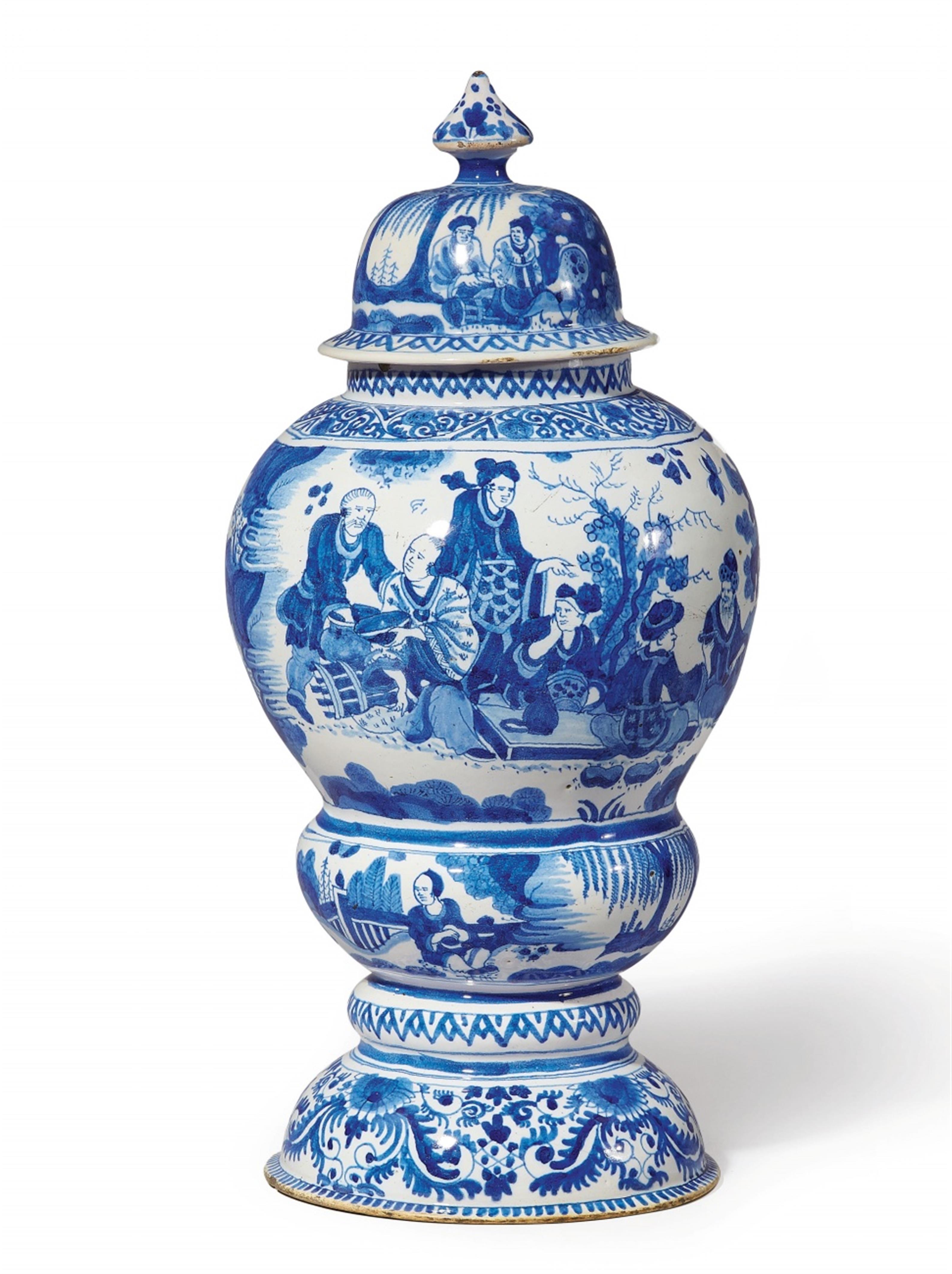A Berlin faience vase and cover with Chinoiserie decor
Thick baluster-form vase with waisted lower section and original lid. Decorated with figures in a Chinoiserie landscape. Unmarked. The lid restored. H 43 cm.
Manufactory of Gerhard Wolbeer, early 18th C.
Berlin Faience
100 years of research history
The first major monograph on "old Berlin faience" was written by Otto von Falke in 1923. The former director of the museum of decorative arts in Cologne and director of the museum of decorative arts in Berlin since 1908 was the first to publish the names and attributed products of the Berlin manufacturers. Since early Berlin faiences are difficult to distinguish from Delftware and the producers themselves advertised their wares as "Delft porcelain", his achievement was truly groundbreaking, especially since Berlin faiences are also rarely marked.
Like Delftware, the forms and decor of the Berlin pieces were inspired by Chinese porcelain. The advertising slogan was to be understood in this sense, since at the time, nobody in Europe was capable of producing true porcelain like that imported from China. The use of the word "porcelain" awakened people's curiosity for the new product, and thus both the "plateelbakker" of Delft and the faience makers of Berlin described their productions as such, although they used an entirely different ceramic mass to that used in porcelain and were fired at much lower temperatures.
Otto von Falke's book, published almost 100 years ago, was the first to reveal how the Berlin faience makers Gerhard Wolbeer and his pupil, and later competitor, Cornelius Funcke gradually began to develop their own repertoire of forms, decor, and new pigments around the turn of the 18th century. The work of the Berlin-based art historian Christiane Keisch has brought research into Berlin faience one step further with the knowledge that Cornelius Funcke in Berlin was the first to be able to produce ground colours on faience. In contrast to the pigments of drawn motifs, ground colours have to cover a large area evenly. This is easier said than done, as the pigments are prone to warp during the firing process, causing cracks and losses.
Funcke was even feared and envied by the great Meissen porcelain chemist Johann Friedrich Böttger. The achievements of the Berlin faience makers in the first quarter of the 18th century, facilitated by the economic upswing under the Great Elector and especially under King Frederick I, brought about a revolution in faience technology as well as important impetus in the development of a new style of vessel production in Germany. The collection presented here was amassed over the course of several decades and manages to present a succinct overview of these developments as well as showcasing a love of ceramic design, careful modelling, and respect for the vessels.
Provenance
Sotheby´s London on 7th October 1986, lot 193.
Lower Saxon private collection.
Literature
Cf. cat. Herrliche Künste und Manufacturen, Berlin 2001, no. 20.

